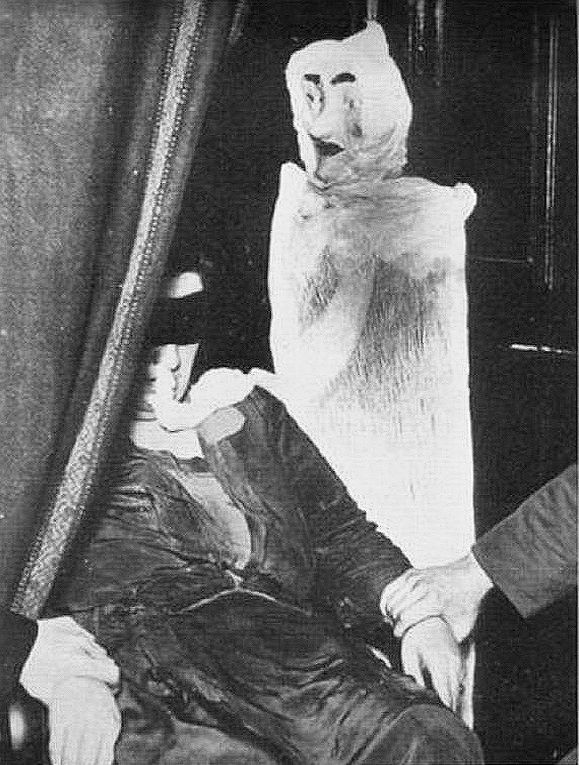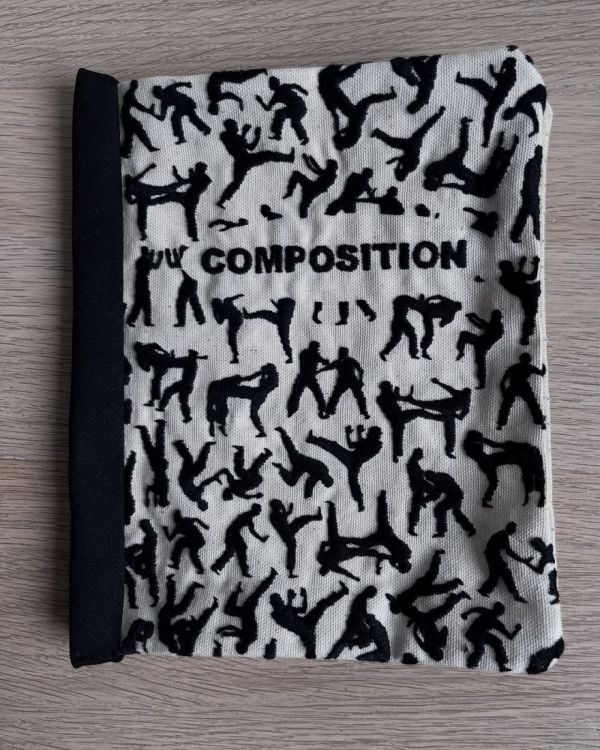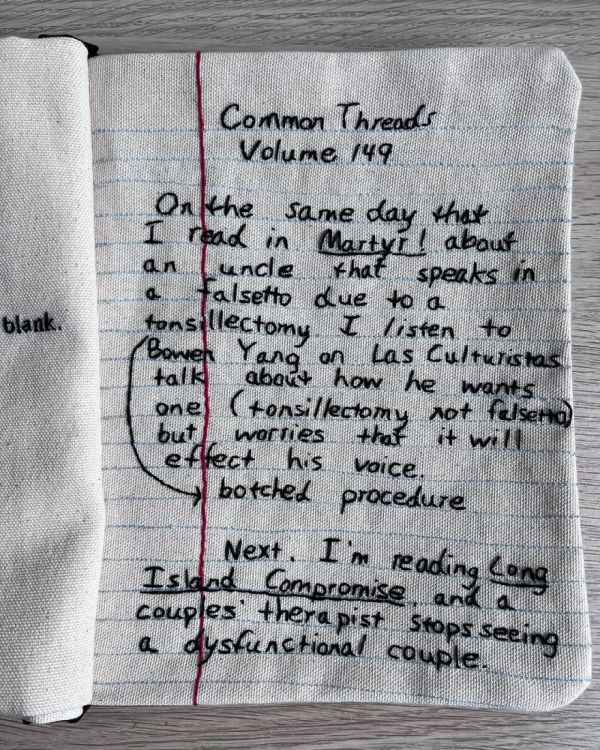The explosion of channels that came with cable TV more than 40 years ago meant that suddenly there were hundreds and hundreds of people on TV every day, working to fill those channels with 24/7 content. It only stands to reason that some of those folks would end up being arrested for murder, even multiple murders. In some cases, it was only after they were arrested that their TV appearances were discovered in the archives and took on a whole new aura. No, you didn't know there was something suspicious about that fellow when you saw him on a game show- you just think that now that we know the truth. The implication is that any one of those people you see on TV on any given day could be harboring secrets that would give you the willies. Weird History tells us the stories of seven killers who had previously been on TV, mostly for something completely different.
The 26 letters of the Latin alphabet have been around a long time and aren't liable to change anytime soon. The last letter was added to it around 400 years ago, but it's not Z, even though that is the "last letter." Take a guess at which letter it is before you continue with the next paragraph.
The newest of the 26 letters is J, which descended from the letter I. See, in Latin, I was used as both a vowel and a consonant. That consonant in Latin had the Y sound. But as English developed, the I started to be used for words pronounced like a J. At least we think so- we don't have sound recordings, but we can't imagine pronouncing Shakespeare's play as Romeo and Yooliet back in 1597 when it was spelled Romeo and Iuliet. The same with Iesus and Ioseph from the 1611 edition of the King James Bible. To make things easier, they introduced the J, which took quite a few years at the beginning of the 17th century to become standard. Read about the introduction of the J at Word Smarts. -Thanks, WTM!
Laurence Brown of Lost in the Pond takes a look at the US map and addresses the quirks of state boundaries, namely those dangling rectangles that we call panhandles. These are even stranger than the squiggly lines of those borders, because they don't have much of anything to do with natural geography like mountains or rivers. Every one of these panhandles has a story behind it, or what he calls a "ridiculously complex history." Some have to do with the military conquests between England, Spain, and France for American territory as the US was formed. Others are due to political machinations during the time the borders were drawn, because there have always been competition between states, for one reason or another. Or between countries, in the case of Alaska's panhandle. Some of these disputes are still going on the in the 21st century! There's a 45-second skippable ad at 2:47.
Great Britain prosecuted many women for witchcraft under the Witchcraft Act of 1735. That act was actually a reformed version of earlier laws, making a claim of magical powers punishable by prison instead of death. Still, you'd think that witchcraft trials would have died out long ago, but Helen Duncan was charged under the act in 1944! Duncan was a well-known Scottish medium who held seances and claimed to communicate with the dead. During these seances, she produced "ectoplasm" from her nose and mouth. In the image above you can see that the "ectoplasm" looks a lot like cheesecloth and the apparition appears to be a papier-mâché puppet.
It was in 1941 that Duncan really got into trouble, when she "saw" the sinking of a British warship before officials knew about it. Was Duncan a charlatan, a spy, or just a security risk? British officials weren't taking any chances, and charged her under the Vagrancy Act, which covered fraud. But under that law, she might have very well escaped any prison time, so prosecutors pulled out the Witchcraft Act as well in order to ensure Duncan could be jailed for the remainder of the war. Prime Minister Winston Churchill was furious at the charge of witchcraft, and demanded to know how much much would be spent on this "obsolete tomfoolery." Read about Helen Duncan and her World War II witch trial at the Daily Mail. -via Strange Company
Many people don't realize that William Shakespeare's play The Tragedy of Macbeth was inspired by a real king named Macbeth, or formally Macbethad mac Findláech. He was a Scottish king from 1040 until 1057. Anyone unfamiliar with the real Macbeth can be forgiven, since that was 1000 years ago and there have been a lot of kings in a lot of countries since then. Shakespeare obviously fictionalized the story, adding the prophesies of three witches that eventually came true. They aren't the only witches in the play, and there are also ghosts and prophetic visions. But Shakespeare added more than the supernatural elements to craft his story- like lots and lots of murder. Five hundred years after the fact, the bard made a really tragic and compelling story out of the few facts we know about Macbeth's reign and the details that were added much later. In this TED-Ed lesson, Benjamin Hudson explains the many reasons Shakespeare had for crafting the tale of Macbeth the way he did.
Ross Island in Antarctica has a bus that transports people between the airport, McMurdo Station, and New Zealand’s Scott Base. But this is no ordinary bus. This transport vehicle is 46 feet long, and 12.5 feet wide, and it can hold 56 passengers. Its name is Ivan the Terra Bus. Ivan's tires are nearly six feet in diameter, and passengers must climb a ladder to get in. The bus was slow, but could drive through weather and terrain that other transport options couldn't. And Ivan served Ross Island faithfully for 30 years.
The very day the bus first arrived in 1994, a driver backed into a bollard, leaving a dent in the rear which has never been repaired. It's part of the bus's historic charm. The inside is covered in stickers, commemorating its riders' various adventures in Antarctica. But after 30 years, replacement parts were getting hard to obtain, and the bus was officially retired. However, Ivan the Terra Bus's fans hated to think that the bus would go to the scrap heap, and they rallied to make sure it would be preserved for posterity. Read up on the legacy of Ivan the Terra Bus, including the story behind its name, at Atlas Obscura.
(Image credit: Eli Duke)
Candace Hicks works primarily with fabric arts, notably embroidery on canvas. Her use of this long-established medium is highly innovative as we see in her faux composition notebooks.
They're not static images. You (or, better, a museum curator) can open them to reveal personal journals in fabric form.
What if Studio Ghibli directed Lord of the Rings?
— PJ Ace (@PJaccetturo) March 27, 2025
I spent $250 in Kling credits and 9 hours re-editing the Fellowship trailer to bring that vision to life—and I’ll show you exactly how I did it 👇🏼 pic.twitter.com/IqUeBSH4H0
The good people of X have, for the past two days, used ChatGPT to render famous photos and memes in the style of Hayao Miyazaki's Studio Ghibli films. This trend may have inspired AI filmmaker PJ Ace to use more sophisticated AI options to remake the trailer for The Fellowship of the Ring in the Ghibli style. It works quite well.
Miyazaki has not responded to this recent development, but he is on record as describing AI art as "an insult to life itself."
When I heard a new record was set for the longest tail on a cat, I first thought about measuring my cat's tails, because they are pretty long. But when I got a glimpse of Pugsley Addams, I knew there was no point in doing so. This Maine coon cat from Mound, Minnesota drags around a feather duster that can't be topped! Pugsley belongs to the Cameron family, who has four Maine coon cats: Pugsley, Gomez, Winnie, and Duchess. They knew Pugsley had an exceptional tail, but only when his veterinarian expressed amazement did they think about a world record. The existing record for a tail on a living domestic cat was 16 inches, and Pugsley's was longer. Guinness World Record officials determined Pugsley's tail is 18.5 inches (46.99 centimeters) long!
But he may beat his own record in time. Pugsley is only two years old, and Maine coon cats often don't reach their full size until they are four or five years old. Read more about this long-tailed cat and how he and his brother Gomez resemble their Addams Family namesakes at the Guinness site. -via Boing Boing
In Buddhism, the word "buddha" means "enlightened one." Then there's the Buddha, a man named Siddhartha Gautama who was the founder and sacred embodiment of the religion. We honestly don't know many facts about his life, because no written records existed until centuries after his lifetime. We don't even know when that lifetime was, although it was said to be somewhere around the sixth century BCE. But we do know that he was born in the village of Lumbini in Nepal, near the Indian border.
Lumbini with its many Buddhist temples and monasteries thrives economically because of tourism, but suffers from avid tourists taking anything that's not nailed down as a souvenir. At the same time, archaeologists are sifting through Lumbini's past to research the actual life of Siddhartha Gautama and separate the facts from the magical and sometimes contradictory legends that have grown around him. Read what has been discovered so far at Smithsonian magazine.
When I read how this animated sequence was made, I was impressed. But is the finished product any good? Yeah, it's the story of a miniature man who must save his miniature puppy from an evil Roomba. Now for the technical stuff. Wren from Corridor Digital acted out the part wearing motion capture equipment that digitized his moves. Then our hero's figure was rendered in plastic parts for every necessary movement by a 3D printer and assembled for each frame! Finally, each figure was photographed individually to create the film. They printed up more than 2,000 parts for this sequence, and the assembly and frame-by-frame photography took a lot of time. But they proved it could be done. Then they sold off those parts as an assemble-it-yourself Wren action figure. Since they sold out, they decided they could make more. If you're interested in the process of producing this type of animation, there's a 23-minute behind the scenes video. -via The Awesomer
You may or may not have heard the term squircle before, but if you are in the design business, you certainly already know that a squircle is a shape between a square and a circle. But that doesn't mean it's a square with rounded corners. Oh no! In the graphic above, the figures are a square, a rounded square, a squircle, and a circle. The difference between a rounded square and a squircle is that a squircle doesn't have any straight lines, whereas a rounded squard retains the straight sides of a square. Which you prefer is up to you, but plenty of people find it more pleasant to see continuous curves of a squircle.
One place you've seen squircles are in dishes, because a squircle-shaped plate can hold more food than a round one, without the sharp edges of a square plate. They've also been associated with Apple products. But what I see when I saw examples of squircles are cathode-ray TV screens. Commenters at Metafilter point out that this shape is also known as a superellipse, in case you want to explore its mathematiucal formula.
(Image source: Webflow)
When we go to another country, we often get recommendations for vaccinations that will protect us from diseases we don't worry about at home. It would be the same for time travelers, depending on what era of history they are going to. For example, I might be able to travel to a time where smallpox was rampant, but my children would not, since they never got the smallpox vaccine. In the 21st century, we don't worry about the plague or leprosy because they are treatable, but going to the past means you also go back to when we didn't have antibiotics, so you'd better take some.
Modern medical science is a wonderful thing, but keep in mind that we still don't know everything. If you travel to the future, you may find yourself in the middle of a sigma flu epidemic, and you are the only one in town who hasn't had a sigma flu shot -because you've never heard of sigma flu. Hank Green gives us some perspective on that one aspect of time travel that science fiction writers never think of. There's a 30-second skippable promotional ad at 4:22.
Britain has an awful lot of stone circles, but Stonehenge stands head and shoulders above them all, not just for its size, but for its mysterious origins. Other British circles are constructed with local stones, while Stonehenge has several different kinds of stones, the nearest coming from 14 miles away. Recently, a thorough analysis of the Altar Stone has been completed, and its origin has been located in the Orcadian Basin in northeast Scotland. That means that some Neolithic team transported that stone at least 465 miles! They don't yet know how the 13,000-pound stone was delivered to Salisbury, but there are theories.
The Alter Stone could be an entry in a multi-cultural collaboration to build Stonehenge. The fact that some stones were as close as 14 miles, and others came from Wales, and the Alter Stone from Scotland, hint that different communities contributed their most impressive stones. Read about the Alter Stone and the latest in what Stonehenge might mean at Smithsonian.
One of the great things about having children or pets is that they give you an excuse to play with toys and build things. Making videos for YouTube is another great excuse. Half-Asleep Chris takes full advantage of this situation to have fun building forts for his two cats Ralph and Bella. For this video, he build ten forts from ten different materials, and then recorded the cats' reactions to see which they liked the best. The result is that we get to vicariously enjoy watching the construction of the forts plus cats.
The forts are made from all kinds of supplies you might never have thought of, like cardboard tubes, toilet paper rolls, and camouflage netting. One wasn't quite interesting enough, so he added glow sticks so it would be visible in the dark! You know what? If you don't have kids, or cats, or pets of any kind, who is going to tell you that you can't make your own fort inside your house? Your significant other will understand. This might even be worthing getting a cat for. For Chris, it was a project that meant he had to buy a lot of toys, which are tax deductible, I'm sure. -via Laughing Squid













